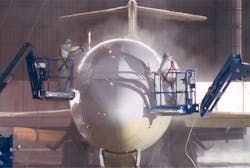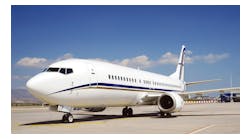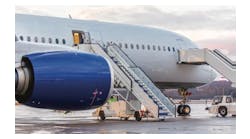AMT conducted a survey in December seeking information on the use of paints and coatings to know what products you use and why.
Of the respondents, 41 percent said they paint aircraft, while 33 percent said they paint aircraft parts and components. Breaking it into industry segments, general aviation was 42 percent; business jets 18 percent, helicopters 18 percent, military 11 percent, and commercial aviation 11 percent. And the largest category of aircraft painted annually was under 25 at 67 percent, followed by between 26 to 50 at 12 percent, none at 12 percent, between 51 to 100 at 5 percent, and more than 100 at 4 percent.
What are maintainers looking for when it comes to paint?
The selection criteria went like this: first durability, followed by color match, customer support, repairability, quick delivery, custom color matching capabilities, price, locally available (within 50 miles), productivity/fast drying, OEM qualifications, environmental benefits, and training.
Comments from technicians as to what the most important brand characteristic is included: “durability and vendor access,” “reliable and repeatable color match;” “ease of application;” “quality, performance, and warranty;” “one coat covering;” “quality and customer service;” “good adherence so it doesn’t chip;” “holds up to extensive washing;” “buying paint in the States and not having to pay hazardous shipping fees from Europe;” “easy to use and fluid resistance and great gloss;” and “long-lasting shine.”
The durability characteristic also came up most often when asked about the primary aircraft coating system used. Other comments included ease of use, price, matchability, availability, repeatable performance in varying conditions, color selection, fast drying, safe to environment, quality, and UV resistant.
What do you wish your present coating brand did better?
The majority of the respondents said faster dry times (36 percent). Other characteristics were improved quality (20 percent), more coating choices (22 percent), and more color options (20 percent). In terms of service options, the most requested was more hands-on assistance (30 percent), better training (26 percent), and faster delivery (23 percent).
Comments from technicians as to what their current brand could do better included: “longer shelf life,” “cost is still an issue,” “quicker cure time and better adhesion,” “color matching from order to order,” “better tips on spray cans used for touchups,” “faster drying times,” “wish the mixing/prep was less complicated,” “could be more UV resistant or fade resistant,” and “nothing, because the distributor is very knowledgeable on the product they are selling and in helping solve problems when spraying.”
The survey also asked what your present coatings brand could offer in terms of product line. The majority requested faster dry times (36 percent), improved quality (20 percent), more coatings choices (16 percent), and more color options (15 percent).
As for service options, more hands-on technical assistance ranked first (30 percent), followed by better training (26 percent), faster delivery (23 percent), and more frequent rep face time (11 percent).
Painting an aircraft is part of the maintenance required; it prevents corrosion. A typical paint job protects an aircraft for about six years for jets and six to eight years for turboprops. AMT talked to a few companies that specialize in business aircraft coatings; read what they have to say about trends in the industry and what customers are demanding.
Elliott Aviation
Elliott Aviation is a diversified aviation services company with three Midwest locations in Minneapolis, MN; Des Moines, IA; and Moline, IL. Known as a world-class provider of comprehensive and customer-focused solutions for business aviation, it is a second-generation, family-owned business. It has been providing aircraft sales, aviation services, and innovative solutions since 1936.
According to its mission statement,” Whether you are a customer or employee, when you work with Elliott Aviation, you are part of our family and we will treat you with honesty and integrity. We promise to deliver excellence to our customers, treat your aircraft as if it were our own, and strive to do the right thing every time.”
Part of Elliott’s customer service is utilizing EnVision technology to give clients a preview of the finished product through 3-D modeling. The system has thousands of options for interior refurbishment and paint applications, allowing customers to see the exterior paint scheme with graphics and logos in place.
What the customer wants
“While in the past, business aviation has been standard Matterhorn White with two metallic stripes,” says Roy Block, Elliott Aviation paint shop manager, “we have been seeing more unique paint jobs lately. Customers are seeking out high-quality paint jobs with fast turns. We are also seeing customers looking for longer paint warranties.”
Facility upgrades
“When we built our paint facility in 2007, we led the industry as one of the only climate-controlled, down-draft facilities in the country,” Block says. “That construction was so far ahead of its time, that since then the only improvement we have needed to make was to add electrostatic paint guns, which we did in January of this year.
“The switch to electrostatic paint guns has been a great change for our team,” he continues. “They take a little getting used to but once you have been using them after just a few hours, you start to see how big a difference they make.”
Depending on the sizes of aircraft that go through the facility, Elliott Aviation can handle about 60 slots per year.
Trends
“There are a lot of newer technologies emerging centered around painting aircraft,” Block says. “One that we are seeing is the move toward the use of electrostatic guns. Although they are significantly more expensive than traditional paint guns, they help eliminate high and low spots to ensure an even mill thickness. They also significantly reduce overspray.”
It is also seeing an increase in demand for Mica paints, which are basically alternate versions of metallic paints and used in many applications where traditional metallic finishes are not an option,
Elliott Aviation is investing in more chrome-free and low chrome coatings. These coatings are much better for the environment, easier for disposal, and contribute to a better air quality within the facility.
Experience
Currently Elliott has about 25 paint technicians, and many have over 20 years of experience. Block has 23 years of aircraft painting experience, starting with his father’s aircraft painting business in east central Iowa where he worked for 10 years painting light aircraft. He will soon be celebrating his 13th year with Elliott Aviation where he began as a second-shift paint technician, advancing to team leader, supervisor, and now paint shop manager.
King Aerospace
AMT talked to Randy Johnson, director of corporate aircraft services and paint shop manager at King Aerospace in Ardmore, OK. For over 20 years, King Aerospace has been providing aviation services on a global basis to operators of VVIP aircraft, corporate aircraft and government aircraft. Headquartered in Addison, TX, it employs 75 and 40 of those are in the paint shop, according to Johnson.
What the customer wants
“Customers are asking for VVIP level quality and from what we hear no one is offering it,” Johnson says. “We’re a quality-based company and are looking to specialize in this area. It takes a little more and costs a little more but it is what the industry is asking for.”
King Aerospace mandates that all of its employees share in the company’s principles and values. Its mission: “Make a positive difference in the lives of those we employ, we serve and encounter and earn a fair profit.”
King Aerospace defines its culture of inclusion as including mutual respect; honesty and trust; non-political environment; team oriented; demonstrated performance; proactive, problem-solving attitudes; quality in everything, (no excuses); and earn a fair profit.
“And we live them,” Johnson says, “it’s a good work environment.” And to prove the point he’s been at King Aerospace for 21 years.
Facility upgrades
Last June the company upgraded its facility and moved the paint booth into the facility. “That’s worked out real nice,” says Johnson. “The new facility can handle a 757 or a BBJ.” The 757 takes 55 days to complete a paint job while a corporate jet takes 45 days, he says.
“Customers are leaning on us,” he says. “We’re talking about adding a second booth so we could fit two large aircraft at the same time. We can’t accommodate all the people that want the work done.”
Currently the company is capable of handling as many as 50 corporate jets annually.
Trends
“Customers are asking for chrome-free primers as they are more environmentally friendly,” Johnson says. ”And it cuts the metal treatment process. We’ve used Sherwin-Williams on our last two large aircraft. We use Graco Pro X electrostatic spraying equipment.”
The change to electrostatic spraying equipment has been beneficial to the overall quality over the previous HVLP equipment, Johnson claims.
Experience
The average number of years of experience for technicians is 15 to 16 years, according to Johnson. “We have some with up to 30 years experience. Three years is the minimum and they’re working their way up.”
Like many maintenance facilities there are open positions; a recruit would need five years minimum to be hired, Johnson says. There is on the job training for specific airframes, although the processes are the same for VVIP and corporate aircraft.





